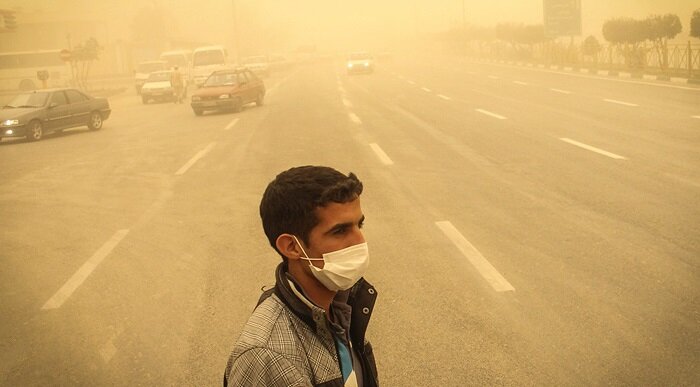Sources of SDS increase year by year

TEHRAN – Over the past two years, the precipitation rate has been on a downward trend, as a result, sources of sand and dust storms (SDSs) have increased compared to a year before, Ahad Vazifeh, head of the national center for drought and crisis management has said.
The SDSs phenomenon has been plaguing the country for several years and has caused problems in many provinces. According to experts, natural and human factors are involved in the occurrence and severity of this phenomenon which is mainly caused by excessive consumption of water and drying up reservoirs.
SDSs hotspots cannot be counted accurately, but their location is known, studied, and adapted in maps, and it is quite clear how many dust hotspots there are, but the point is that the amount of them is not constant because it is based on annual rainfall, he explained.
Declining water levels in dams and lakes mean that water available to humans has been reduced and the dust-raising areas have been increased, he lamented, ISNA reported.
Turkmenistan, Uzbekistan, Afghanistan, Pakistan, Iraq, Syria, Saudi Arabia, and Jordan are the external sources of sand and dust storms. The internal dust sources are estimated at 34.6 million hectares, generating an average amount of 4.22 million tons of dust per year, about 1.460 million hectares are dried wetlands.
Some 4.23 million tons of dust are raised per year, which means the loss of soil fertility will hit the agricultural sector.
All the SDSs sources are not located in Iran, 300 million hectares in the neighboring countries are giving rise to SDSs, which transport dust into Iran. The total dust density is estimated at about 150 million tons.
In fact, the dust is raised from Turkmenistan, Uzbekistan, Afghanistan, and Pakistan in the northeast as well as Iraq, Syria, Saudi Arabia, and Jordan in the south, southwest, and west.
SDSs mitigation requires enhanced diplomacy
Controlling sand and dust storms (SDSs) requires strengthening diplomacy, and it will never be eradicated unless international institutions reach a consensus.
Dariush Gol Alizadeh, Head of Iran's National Climate Change Office (NCCO) of the Department of Environment told IRNA on Tuesday that the hotspots of the dust haunting the country in the last few days in eastern Syria, western Iraq, as well as Jordan, and Saudi Arabia.
These dust sources have appeared many years ago, and due to the drought and water shortages that have occurred in recent years, they have both intensified and increased in number. In fact, abandoned agricultural lands in those countries are a source of SDSs, he explained.
If serious action is not taken in the form of diplomacy and international institutions do not comply with the requirements to eradicate SDSs, the countries will always be haunted by the phenomenon, he lamented.
SDS not only affects people’s health but also has a psychological effect, it also has a great negative effect on agricultural products, and on the reproduction of plant species and activities such as beekeeping, he further noted.
At present, this phenomenon cannot be dealt with, but the damage can be minimized, he said, adding that programs to be carried out in this regard can be planting crops, shrubs, and finally soil stabilization by biological mulches.
FB/MG
